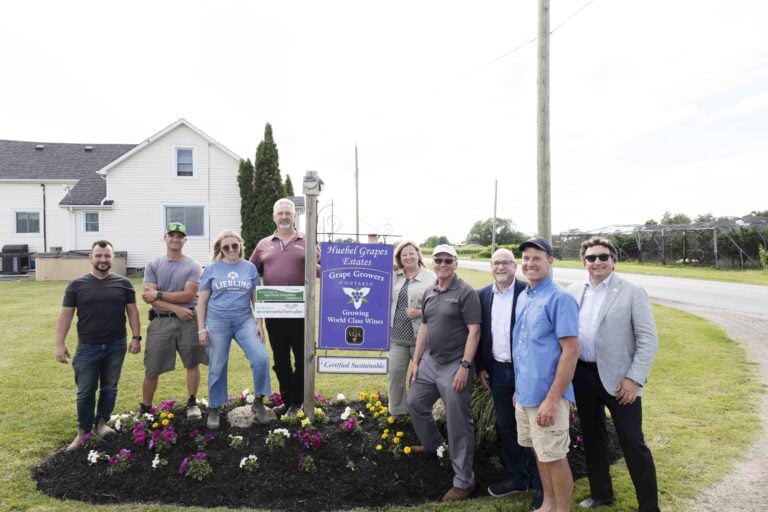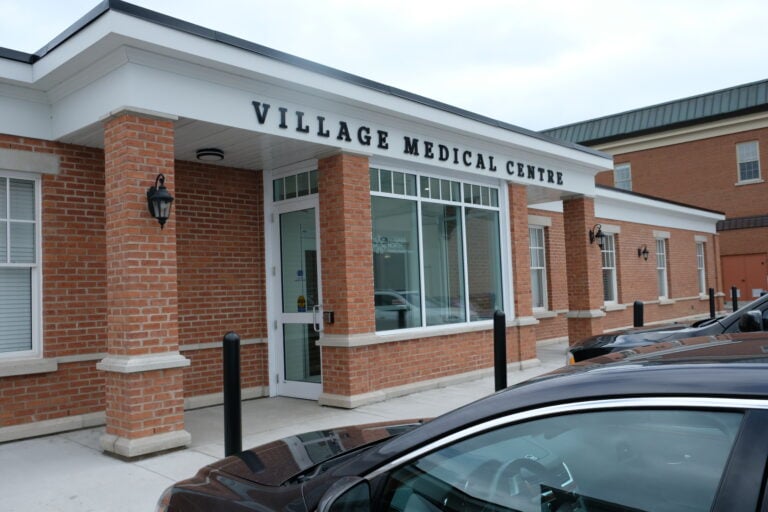After stopping to help an injured cyclist who was bleeding from a head wound, Virgil resident Ross MacIntyre grew frustrated with the wait time for the ambulance and, ultimately, the province’s failure to adequately fund Niagara’s emergency services.
MacIntyre was driving home from work on Line 2 Road on the morning of May 26 when he saw a man lying on the side of the road next to a bicycle.
“And then I noticed all the blood kind of around him and he was conscious but very much not aware of his surroundings. I think he had been unconscious slightly before that,” MacIntyre said in an interview.
He called 911 and while he was on the phone another car pulled up and Chelsea Muste, a nurse, got out to help.
He said Muste used baby wipes to try to stem the bleeding while he called emergency services.
The Lake Report reached out to Muste for comment on the incident but did not receive a response before publication.
“I told (911) that there was somebody else on the scene who was taking care of him,” MacIntyre said.
“She said, ‘I’ll let you go now but if it gets worse, put them on his side and the ambulance should be there in about 30 minutes.’”
“And I thought that was long. I asked her to repeat that, like, ‘Did you say 30 minutes?’ And she said, ‘Yes.’ ”
Macintyre said he isn’t sure when exactly the ambulance arrived but a spokesperson for Niagara Emergency Medical Services was able to fill in the blanks for The Lake Report.
“Looking at the call history, the information originally provided to our communication centre at 11:32 hours was that there was a male patient fell off his bike, completely alert and breathing normally, with bleeding from the head,” Supt. Bryce Brunarski said in an email.
“It indicated that bleeding was being controlled by a bystander at the scene. The closest, most appropriate vehicle was dispatched Priority 3,” he said.
Around 11:50, about 18 minutes after the initial call, another bystander showed up to the scene, MacIntyre said.
“Again, when I told him that it was going to be 30 minutes, he said, ‘Well, that’s that’s not right,’ ” said MacIntyre.
This new bystander then called 911 and reported the cyclist had been hit by a car to see if the paramedics would arrive sooner.
MacIntyre did not know the name of the other person who called EMS. Question the ethics of the situation if you will, but the fib worked.
“At 11:53 hours we received updated information that the patient was in fact struck by a vehicle, completely alert and breathing normally,” Brunarski said.
“With this new information the call was upgraded to a Priority 1 and a different ambulance was assigned (at 11:53 hours) and arrived at 11:57.”
About 16 minutes later, the ambulance departed for a hospital. The Lake Report was unable to confirm the cyclist’s condition or injuries.
According to Niagara Region’s website, a Priority 3 call’s arrival time goal is within 15 minutes. The region reports that this goal is met 82.79 per cent of the time, based on 2018 data.
In this situation, 21 minutes had passed and there was still no sign of an ambulance, prompting the second call and the incorrect claim that there had been a car involved.
A Priority 1 call, which the situation was then upgraded to, is supposed to take eight minutes for arrival. The ambulance was there within four.
“It’s no secret that our communications centre is handling a high volume of calls and our paramedics are providing care to these callers, all while dealing with extensive offload delays at hospital (emergency departments),” Brunarski said.
“Our dispatchers are constantly moving available paramedics around the region to provide optimal coverage at all times.”
For MacIntyre, it was scary to be dealing with what he feared was a life-threatening injury while having to wait 30 minutes for help.
As Canadian bard Gordon Lightfoot once sang, “Does anyone know where the love of God goes when the waves turn the minutes to hours?”
The long wait made MacIntyre, a father of two, wonder what would happen if any of his loved ones had a similar emergency.
“Just being in a situation where we needed the ambulances as quickly as possible, and then seeing how long it took made me worried for if and when we’re going to need (an ambulance) for either ourselves, our young children or parents,” MacIntyre said.
But he doesn’t blame the overworked paramedics of the Niagara Region for the extended wait time. He sees the problem as a lack of provincial investment into our health system.
“This is something that obviously should be of concern for residents of Niagara-on-the-Lake,” MacIntyre said.
He criticized the Ford government’s decision to invest $10 billion in the proposed Hwy. 413 north of Toronto.
“I was discussing with my wife this morning how ridiculous it seems to me to be putting that money into highway infrastructure when they’re siphoning money away from health care and education and the things that seem like they would be more important to Ontarians,” he said.
“First things first, we’ve got to take care of the people. I would like to see more money, of course, go into health care, especially having seen first-hand the effects of that kind of (defunding),” he said.











